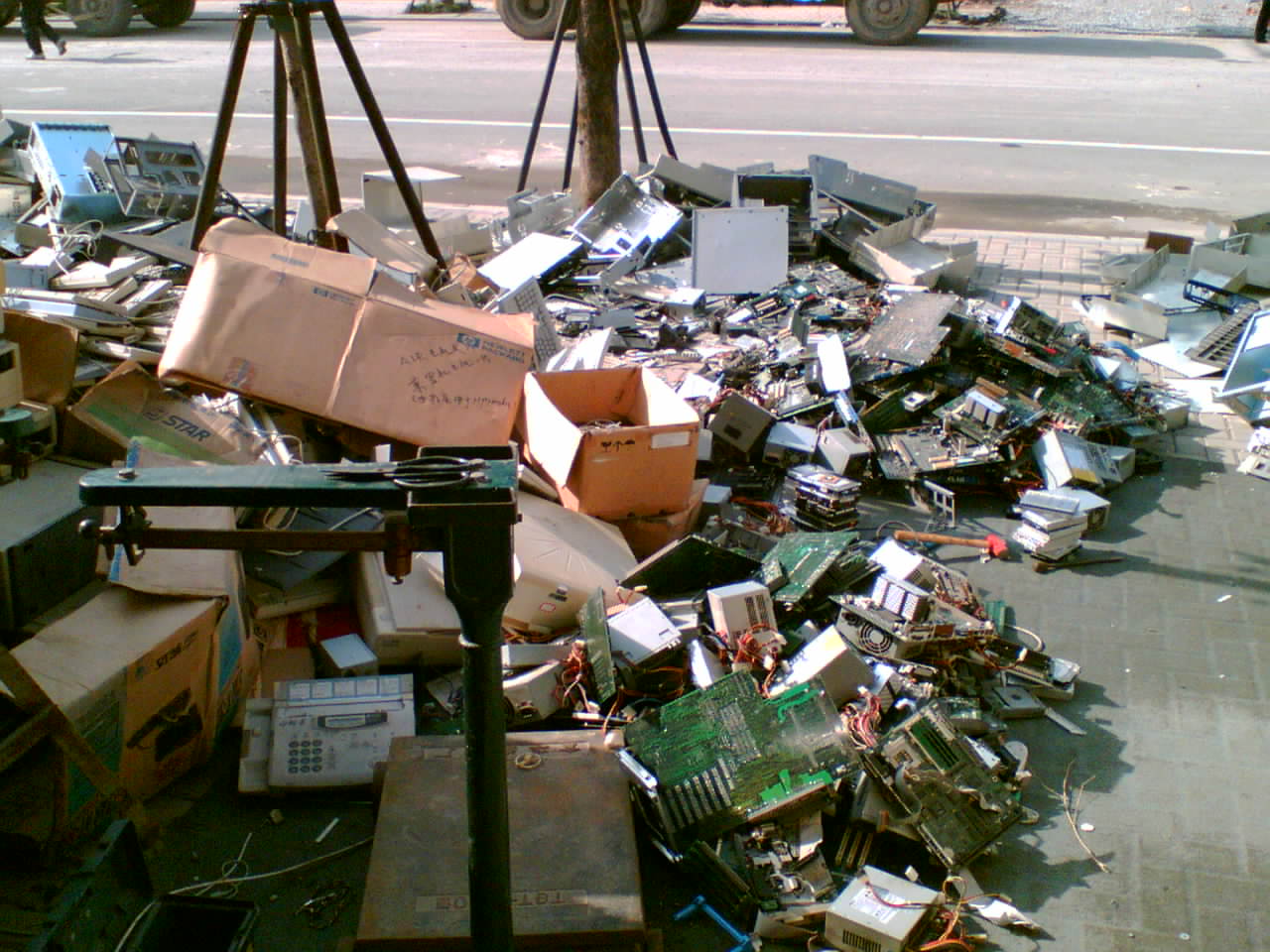Posted: April 16th, 2009 | Author: Shui Jing | Filed under: waste industries | Tags: Cixi | No Comments »
From 1949 to 1991, renewable resource in Cixi was recycled by Cixi Supply and Marketing Cooperative. After 1991, huge amount of peasants got into this field, and began to shape the new renewable resource recycling network. Until the end of 2007, there were 513 households under licence for work in the renewable resource recycling industry. The statistics from the end of the 2007 are that nearly fifty thousand people worked in this industry, and most of them are migrant workers and people without fixed duties. Basically they are lack of license. They gathered these waste products from residential area and garbage bin. It is a very primitive way to collect these renewable resources.
At present, the widespread phenomenon is that, they competition for gathering waste iron, steel, copper, scrap, waste paper. However pay less attention on glasses and the waste household appliances and computer because these waste products need more professional knowledge for them. In addition, the technical content is higher then waste metals. It seems too tough for them. As mentioned before members in this recycling field are mostly peasants and migrant works.

They use tricycle to collect waste products
For salvage station, the majorities are illegal and set up at random. They stock these waste products outdoor or set up the buildings constructed without licence. Furthermore they sorting, dismantling, and processing these at the same place. Thus it definitely became the pollutant for city.

One of the reclamation depot in Ningbo
Reference
Cixi Federation of Supply and Marketing Cooperatives 2008,Cixi City of Renewable Resource Recycling Network System Planning. Retrieve April 8,2009,from http://gxls.cixi.gov.cn/art/2008/11/14/art_15589_236111.html
慈溪市供销åˆä½œç¤¾è”åˆç¤¾2009,慈溪市å¯å†ç”Ÿèµ„æºå›žæ”¶ç½‘络体系建设规划, æ¥æº 于2009å¹´4月8æ—¥
Posted: April 16th, 2009 | Author: Xu Shengxi | Filed under: creative industries | Tags: creative clusters | No Comments »
According to Michael Keane that the form of creative clusters which posted in 2006 in China need to absorb people from outside. In other words they need people who are “boundary spanningâ€. He suggests that planning is the core element which leads to success or not. In China the participation of government to some certain degree will help creative industry to be ordered and balanceable. For example, in Shanghai, Media Cultural Park where is rebuild from Shanghai Window Hook Factory now absorb many design studios and companies which produce film and video for advertisements. As the gate keeper said the government of Shanghai supervises this creative cluster and insures that the retired and laid-off workers of Window Hook Factory could get access to work. Because of the government’s effort this area is successfully attract investments from outside. In term of Ningbo, there are inadequate talented people and governmental supervision, especially in taxation, territory, governmental subsidy, social financing and the set up of polynary invested mechanism (Nie and Wang 2008). Moreover, Michael Keane mentions “learning region†in which knowledge can be absorbed and transformed easily often be the reason why government prefer to promote the exploration of clusters. One typical phenomenon is that in China many cities, no matter rich or poor, tend to develop creative clusters, however, this method is not fit for all the cities in China. As Michael Keane critics that the establishment of creative clusters need the investment of profound professional knowledge in exploring, detecting and exploiting jus like Silicon Valley. In Ningbo creative clusters are developing at a primary stage. In Loft 8 there are many design studios. The studio No Space is always be the place that holds exhibitions like art and photographic exhibition. Nevertheless, the popularity is low because the lack of propaganda. In addition, the scarce of planning also lead to low attention on creative cluster in Ningbo. In other words, the creative clusters need to be expand and complete in angles of globality, function and forward looking (Nie and Wang 2008).
References:
Keane, Michael (2008) ‘Creative Clusters: Out of Nowhere?’, Urban China 33: 34-35.
Nie, J L & Wang Q Y (2008) The Survey on Current Situation of Creative Industry and Development Stratagem in Ningbo. Market Modernization. Vol.561, p.213-215.



Recent Comments